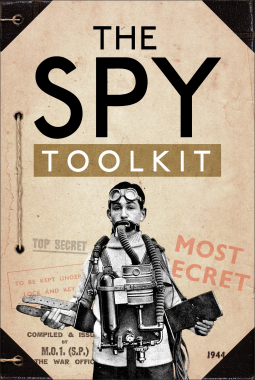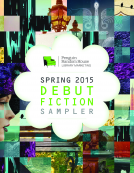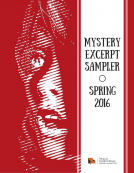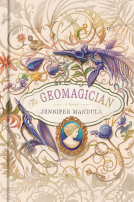
The Spy Toolkit
Extraordinary inventions from World War II
by ; Stephen Twigge
This title was previously available on NetGalley and is now archived.
Send NetGalley books directly to your Kindle or Kindle app
1
To read on a Kindle or Kindle app, please add kindle@netgalley.com as an approved email address to receive files in your Amazon account. Click here for step-by-step instructions.
2
Also find your Kindle email address within your Amazon account, and enter it here.
Pub Date Jun 19 2018 | Archive Date Aug 23 2018
Talking about this book? Use #TheSpyToolkit #NetGalley. More hashtag tips!
Description
Spies claim that theirs is the second oldest profession. Secret agents across time have had the same key tasks: looking and listening, getting the information they need, and smuggling it back home. Over the course of human history, some amazingly complex and imaginative tools have been created to help those working under the cloak of supreme secrecy.
During World War II, British undercover agents were the heroes behind the scenes, playing a dangerous and sometimes deadly game--risking all to gather intelligence about their enemies. What did these agents have in their toolkits? What ingenious spy gadgets did they have up their sleeves? What devious tricks did they deploy to avoid detection? From the ingenious to the amusing, this highly visual book delves into espionage files that were long held top secret, revealing spycraft in action.
Available Editions
| EDITION | Other Format |
| ISBN | 9781472831484 |
| PRICE | $15.00 (USD) |
| PAGES | 160 |
Links
Average rating from 13 members
Featured Reviews
I love this sort of thing, it gives an intriguing insight into the methods employed by us in WWII regarding the use of secret agents or spies. It was a lot shorter than I had imagined but thoroughly engaging and complete with photographs of some of the equipment used. I have always being interested in learning about the two world wars and our history as part of them and this was a very quick and easy read on the subject.
I would like to thank Stephen Twigge, Osprey Publishing and NetGalley for providing me with an ARC in exchange for an honest and impartial review.
A brief introduction to WWII era spies, their craft, and ware. The work includes numerous photos, is well-organized, and is appropriate for readers of all ages. A good place to start for anyone interested in spies and history, the first quarter of the book is informative text while the rest is a collection of photos.
Net Galley Feedback
 Librarian 250745
Librarian 250745
An intriguing introduction to WWII era spycraft complete with photographs of various devices. While by no means exhaustive this is a great place to start and very informative within the scope of this book. Definitely a must read for anyone interested in the history of spycraft.
I really liked this, I learned a lot that I didn’t know. Osprey always publishes the best pieces on war.
 Librarian 68637
Librarian 68637
Excellent and approachable history to all the tools spies used in World War 2. Perfect balance between a scholarly history and popular writing.
What a fascinating little book! The photos were very interesting, the text educational and revealing, and all round this was a wonderful book! Definitely just the thing for any spy enthusiast!
 Prem R, Reviewer
Prem R, Reviewer
As one who has read extensively about the Second World War, I was delighted to read, “The Spy Toolkit: Extraordinary Inventions from World War II” by Stephen Twigge published by Osprey Publishing recently. Starting with the story of the famed German spy from the First World War, Margaretha MacLeod, a Dutch dancer and courtesan better known by her stage name of ” Mata Hari “, I have been fascinated (like millions of others, I am sure) by stories of spies and spying. The profession has always been full of hazards and many stories of spies have remained untold. For every spy like Mata Hari who made the headlines there must have been thousands who died unsung, many at the hands of their captors during war.
In the trade of spying, the intelligence and ingenuity of the “backroom boys”, the people who created the tools for the craft was frequently of paramount importance. The job of a spy was to collect information about the enemy, often living in the enemy country, and send back that information to his handlers in his own country. Over the decades, it has come to light that during the Second World War, some of the information obtained from spies was of crucial importance; much of the information served to reinforce what the planners expected or already suspected; and some of the information was totally bogus! The last named was specifically created to deceive the enemy. This happened when spies changed loyalties and became double agents. At other times, they were forced by their captors to act as if they were still in operation though they were really operating under captivity. On most occasions, for spies on both sides, their work involved assuming an identity other than their own and living dangerous lives running the risk of being exposed due to just one mistake.
Twigge’s book is more a pictorial account of the tools used by spies during the Second World War. The pictures have brief details but this is not a series of stories about spies and the actual work they did. This is more in the nature of a documentary on how tools were created and used by spies for both the Allies and the Axis forces. By way of organisation, the book is in six sections. We begin with Secret Agents and an explanation of how they were recruited and trained. The next three sections, Sabotage, Booby Traps, and Incendiary Devices describe the tools used to carry out sabotage against select targets. The fifth section is on Disguise and Deception, the skills that kept the spies alive and in action, while the last section is titled Touching Base and covers how the spies sent back the information they collected to their handlers in their home countries.
Did you know they used bombs hidden in chocolate bars? Also, plastic explosives hidden in cakes of ordinary toilet soap? Or that incendiary material were carried in the soles and heels of shoes? These and many more exciting facts are described in this book which has many illustrations and pictures to back them up. These are absolutely authentic being from the National Archives, no less.
If you are a history or military buff, (or a spy of course!) you will enjoy reading this book.
Readers who liked this book also liked:
Created by Hayao Miyazaki
Comics, Graphic Novels, Manga, Sci Fi & Fantasy
L.M Montgomery
Children's Fiction, Comics, Graphic Novels, Manga, Teens & YA


















